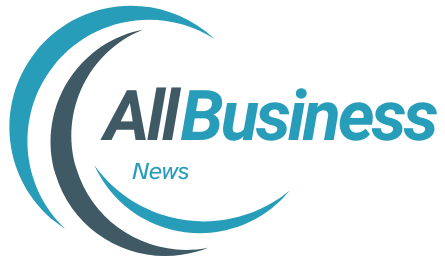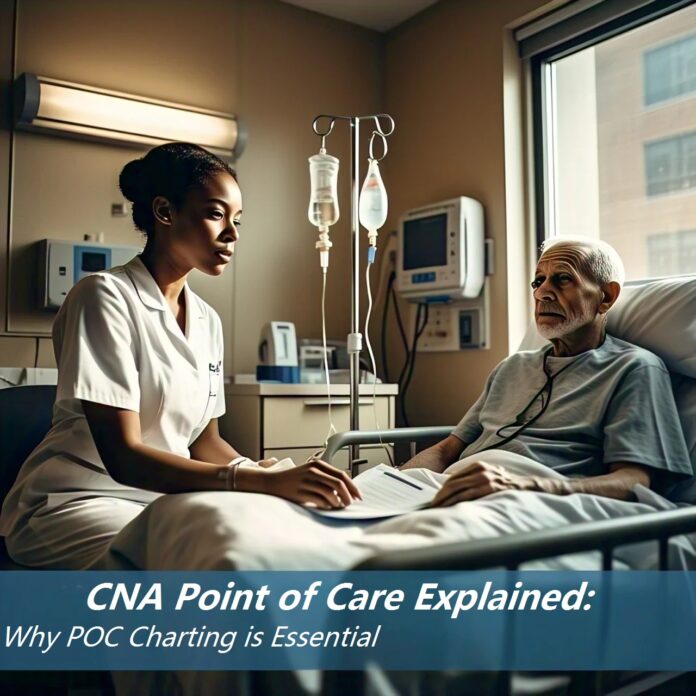Introduction
CNA Point of Care – The role of the Certified Nursing Assistants (CNA) involves a broad scope of activities which ensure patients receive proper attention towards their health and well being. One of the most critical tasks that each CNA undertakes is the accurate collection of patient data and information. This is where Point of Care (POC) charting becomes relevant.
POC has its advantages over normal documentation systems, as it consists of real-time tracking of patient care. CNAs are able to directly enter information into the electronic health record (EHR) system, avoiding issues with accuracy, efficiency, and time. In this article, we will discuss the relevance of POC (CNA Point of Care) charting, its pros for the patients and the healthcare givers, and the reason CNAs need to adopt this technology.
What is POC Charting?
Point of Care (POC) charting refers to a type of digitized charting where health care providers, including CNAs , record patient data at the actual moment and place of treatment. Rather than waiting to transcribe data, CNAs immediately put health records into their tablet, wireless workstations or bedside computers, including other metrics like vital signs and medication administration.
In What Ways is POC Charting Necessary?
1. Enhanced Precision
POC charting is beneficial to patient records because it improves accuracy. Errors in manual documentation stem from poor handwriting, skipped entries, and data misinterpretation. With POC charting, CNAs type relevant information into the system, reducing the chances of human error and providing data accuracy for healthcare providers.
2. Real-Time Data Input
In POC charting, patient information can be captured at the same time it is provided, meaning that information is instantly available. Fast-paced environments where decision making have to occur are best suited for this modality because there is no lag time during patient interaction. Current records can easily be retrieved by nurses and doctors increasing the efficiency of care delivery.
3. Increased Effectiveness
POC systems also eliminate paper based charting which saves time and improves efficiency. A larger portion of time can be directed towards patient care rather than paperwork for CNAs. The automation of mundane tasks lessens the strain from administrative work and allows the health system to function more smoothly and effectively.
4. Enhanced Patient Outcomes
Faster and more effective documentation results in enhanced patient outcomes. Healthcare workers are able to make educated decisions regarding treatment plans, detect probable health issues at an earlier stage, and confirm that real-time data allows patients to receive the necessary level of care.
5. Policy Compliance
Health facilities must adhere to strict regulations on patient documentation. Compliance is guaranteed by POC charting which makes certain that records are complete, standardized, and in conformity with minimum requirement stipulations from Centers for Medicare & Medicaid Services (CMS) and Joint Commission. Legal problems are minimized and care is generally improved.
6. Lower Chances of Medication Error
Integration of POC charting with electronic medication administration record (eMAR) dramatically improves the accuracy with which medication is given. CNAs can confirm dosages, check allergies, and document giving medications in real time, which dramatically lowers the chances of making errors that could endanger patients’ lives.
7. Increased Monitor and Audit Capability
Health facilities have the ability to monitor and audit the care provided to patients with greater ease where there are digital records available. Supervisors can analyze entries, monitor trends, and pinpoint gaps that need to be improved. Quality of care is enhanced by ensuring accountability and improving care practices.
How CNAs Use POC Charting
Point-of-care (POC) systems are used by CNAs for charting a variety of patient information such as:
- Vitals: Blood pressure, heart rate, temperature, and respiration.
- Activities of Daily Living (ADLs): Eating, bathing, dressing, and mobilizing.
- Patient input and output: Intake of fluids and excretion.
- Behavioral observations: Changes in the patient’s mood, level of alertness, and thinking.
- Skin assessment: Wound, pressure ulcer, and skin condition documentation.
- Medication administration (if applies): Recording the administered medications as per the orders.
CNAs commonly use simple systems for entering data in POC systems. Such systems often include menus, templates, and speech recognition to facilitate prompt entry of information into the chart.
Challenges of POC Charting and How to Overcome Them
1. Technological learning curve
For CNAs that have very little experience with technology, the utilization of POC charting can be difficult. Facilities must have proper training and adequate follow-up with the staff to enable them to document electronically.
2. System issues
Some interventions can be interrupted due to downtime or other system problems. These outages can be covered by other systems and appropriate IT specialists to remedy the problem as quickly as possible.
3. Time Management
Although POC charting was intended to be time-saving, some CNAs may struggle with documentation versus patient care activities. With good organization, CNAs can efficiently utilize time-saving tools like pre-set templates to complete charting tasks.
4. Privacy and Security Concerns
Data security is paramount for electronic records. CNAs must follow HIPPA guidelines, use confidential log in credentials, refrain from disclosing patient information, and help ensure patients remain unidentified.
Conclusion
In modern healthcare, POC charting is instrumental in elevating accuracy, efficiency, and patient outcomes. CNA Point of Care are essential to the prompt and precise documentation of patient data. Although there are some barriers to overcome, the advantages of POC charting exceed the setbacks significantly. CNAs help create a more efficient, high quality healthcare system by utilizing this technology.
Frequently Asked Questions About CNA POC Charting
1. What does POC stand for?
POC stands for Point of Care charting, a system that enables CNAs and other healthcare professionals to document patient care information at the time and place of care electronically.
2. Why is POC charting especially important for CNAs?
CNAs benefit from an increase in the accuracy and efficiency of patient record retrieval, as well as real time access to patient records due to POC charting, which improves care coordination and lessens the chances of documentation errors.
3. What aspects of POC charting are the responsibility of the CNAs?
CNA responsibilities include documenting vital signs, ADLs, patient intake and output, behavioral observations, skin assessments, and other important patient care activities.
4. In what ways does POC charting enhance patient safety?
POC charting increases patient safety and quality of care by reducing medication errors, ensuring documentation is done in a timely manner, and allowing for real time access to patient data.
5. What difficulties are associated with POC charting?
Some of the difficulties associated with POC charting include the learning curve for new technology, possible technical difficulties, problems with time management, and breaches in privacy/security.
6. Is it possible to have POC charting done in every healthcare facility?
Not all facilities have the option of using POC charting, however, many hospitals, nursing homes, and long term care facilities do require it in order to comply with healthcare regulations and to improve patient care.
7. Is it possible to attain POC charting remotely?
Whether or not it is possible to attain POC charting remotely depends on the system used by the healthcare facility. Some POC charting systems grant authorized personnel secure remote access while others do not.
8. What methods should CNAs use to enhance their POC charting skills?
CNAs can refine their skills by participating in hands-on training, attending workshops, mentoring with more experienced coworkers, and practicing on the POC charting software.


